The large 46mm Weems Second-setting wristwatch version, unique to Longines, featured a double back, a turning metal inner chapter ring, blued steel full moon hands with a chemin der fer track.
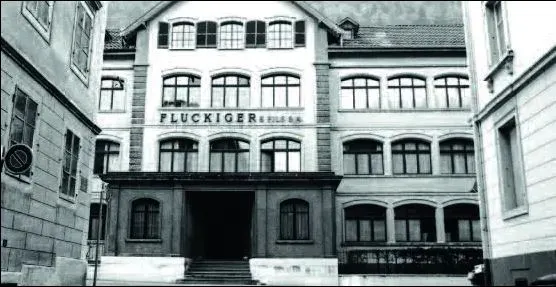
The Fabulous Five Flückiger Weems (Dials) & fonts were an integral part of the first batch of test production pieces delivered to Wittnauer in 1930.
Whilst born as a wrist watch, the large Weems used centre second pocket watch calibres. It first used the 18.69N, before using the upgraded 37.9 in 1938 and the 37.9N in 1941.
Flückiger were the master supplier of Grand feu (great fire) enamel dials to Longines from pre 1910 to post 1950 and consequently made all the Weems and Lindbergh vitreous enamel dials.
The first production pieces were ordered in 1929 by Wittnauer and delivered April 10 and May 2, 1930. They featured an oversize enamel dial graced by one of five incredible Arabic fonts, along with an onion crown that enabled easier use with gloves. This benefit was likely negated by their pin-set movements which would be a challenge setting with gloves.
The complex artisan process creates vitreous enamel, using a process that essentially involves the fusing of glass to metal.
Longines enamel dials use a thin copper base case with up to six layers of enamel powder carefully sifted on to the dial in the firing process at upwards of 800 degrees celsius.
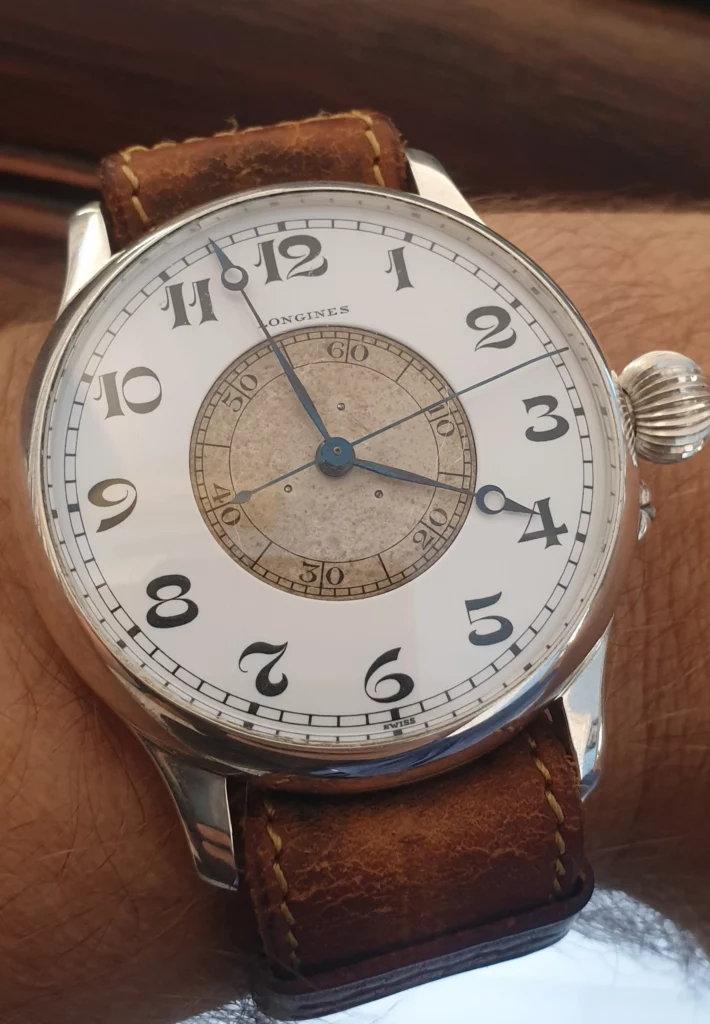
Longines metal and enamel dial pocket, wrist and chrono creations featured a range of fonts in the late 1920’s. An incredible five fonts were utilized on the enamel dials during the inception and production of the Weems models.
For one of these fonts, the production was seemingly limited to the first production delivery in 1930 with just a single known surviving piece.
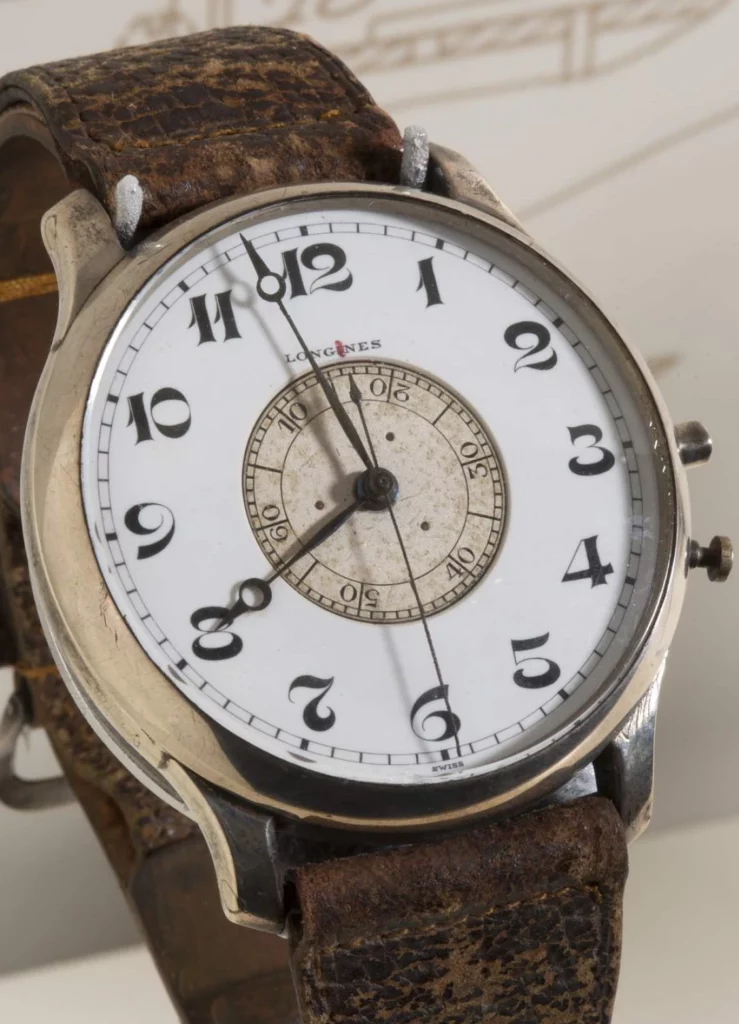
The very first Longines Weems piece with an incredible art nouveau font was delivered to its creator on November 30, 1928, with serial number 3585867.
This watch now rests in the Smithsonian, complete with the exception of the missing crown.
The very first Weems watch ever delivered outside America has case hallmarks dating production to 1929. The watch with serial 3585868, delivered to the UK agent Baume in June 1930 was just one serial number apart from Weems actual watch and also used a new test font.
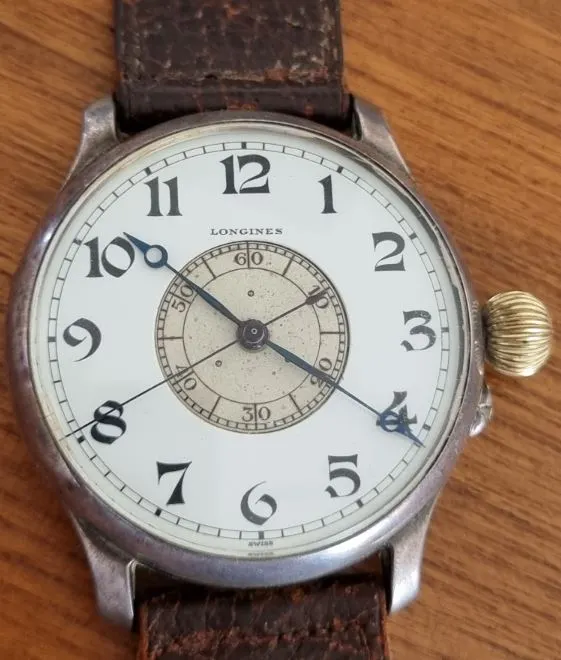
Incredibly, it still has it’s very first pigskin strap, UK hallmarked solid silver buckle from 1929 and accompanying box.
It was the very first large Weems model ever delivered outside America and like piece #1 was a prototype.
The inner chapter ring on these two prototype pieces was just 18.5mm, mirroring its direct descendant the Longines Touran, a dual time pocket watch. The case lugs were thicker, with downward curvature of the case lugs compared to the flatter proportions of the 1930 production models that followed. All of their wonderful enamel dials were made by Flückiger.
The test production pieces that followed in the Wittnauer 1929 order, and subsequent delivery in April and May 1930 all had 21mm second-setting chapter rings.
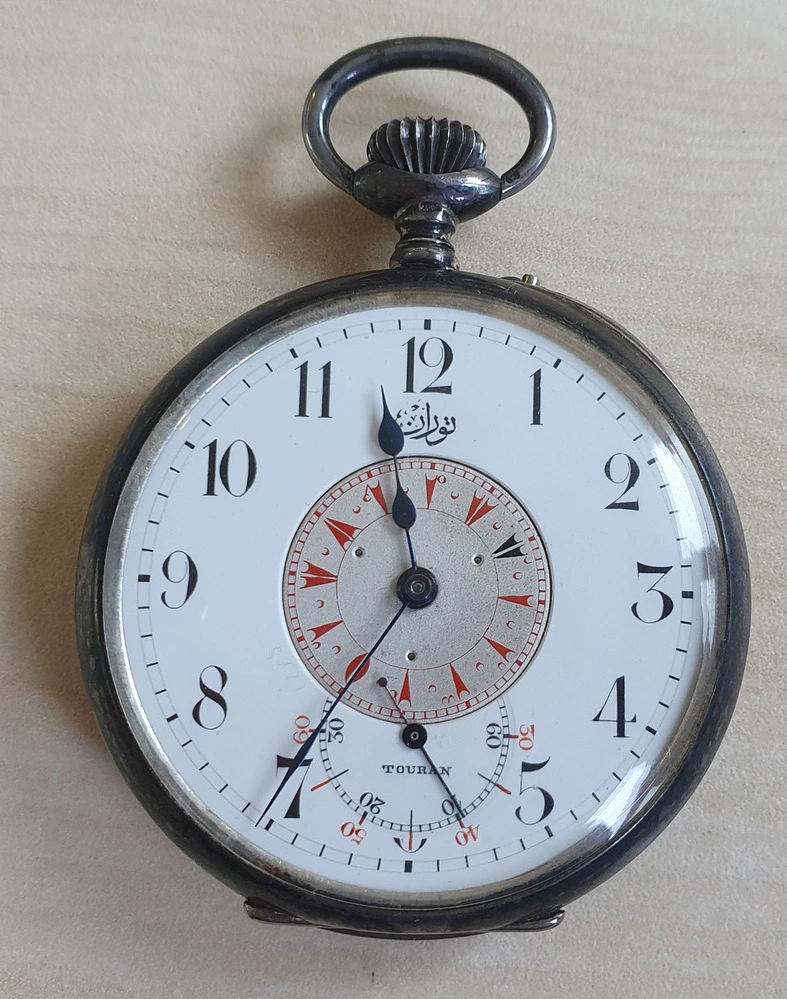
Further, this first couple of Weems pieces used repurposed 18.69N pin-set pocketwatch calibers made by Longines ten years earlier in 1918 for the Turkish agent Nacib, who retailed a Duble tour D’Heure (dual time) turning inner disc pocket watch. The 18.69N movement was first introduced in 1908, and the movement on this second piece is stamped patented in 1911.
Today, one of these early pre-cursor Weems pocket watch pieces with the dial signed Touran, rests in the Longines Museum. It is formative part in the evolutionary process that along with the creator inspired and enabled the Longines large Weems development.
The first production order #139*, made by Wittnauer in 1929, during the onset of the Great Depression, included a number of special test watches. Within this order delivered April 10 and May 2, 1930, were two prototype Hour-angle pieces delivered to Lindbergh.
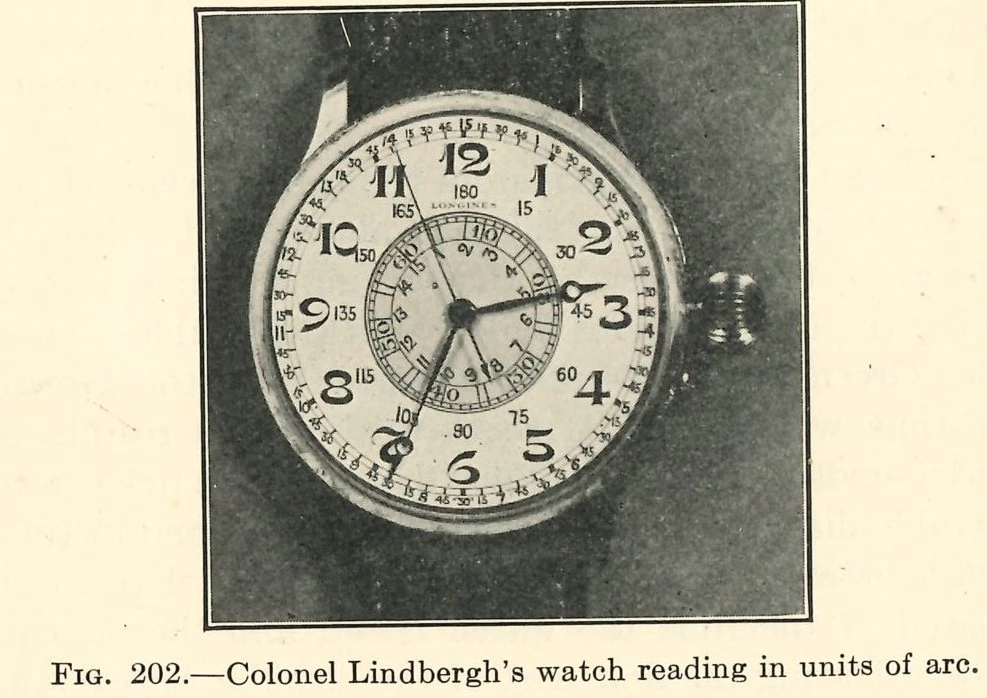
This was one of two versions, the other featured a turning bezel for the unit of arc calibrations. This made it the world’s first turning bezel watch and both were delivered in the first production order in the first half of 1930.
One featuring, the unit of arc calibrations on the dial of the watch, is pictured in Weems Air Navigation book published in 1931.
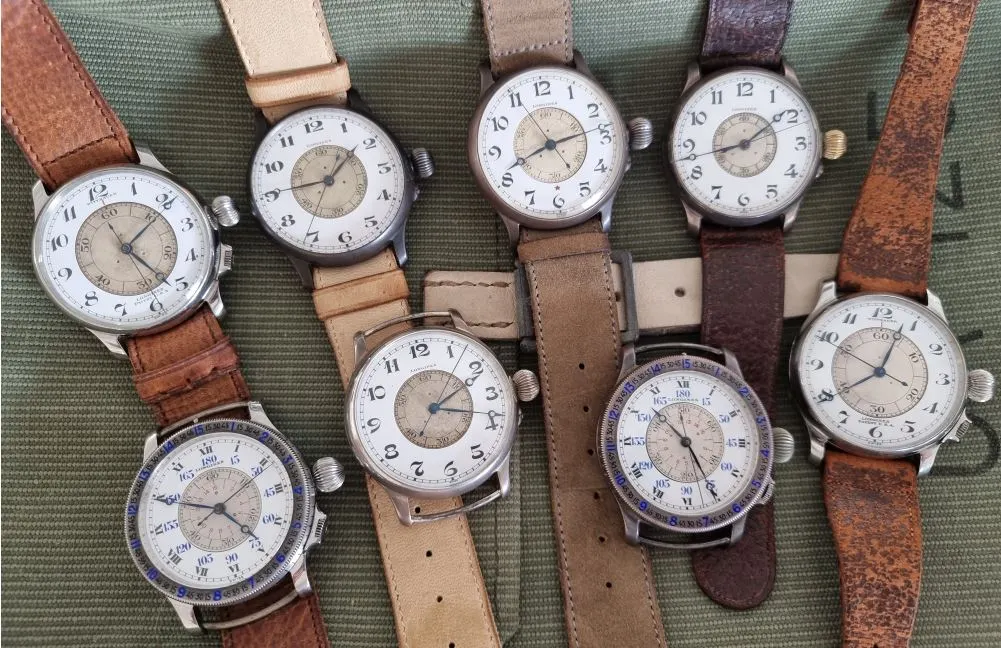
The other delivered with a calibrated turning bezel, also used by Lindbergh, was the world’s very first turning bezel wristwatch – predating the turning bezel on dive watches by some twenty years.
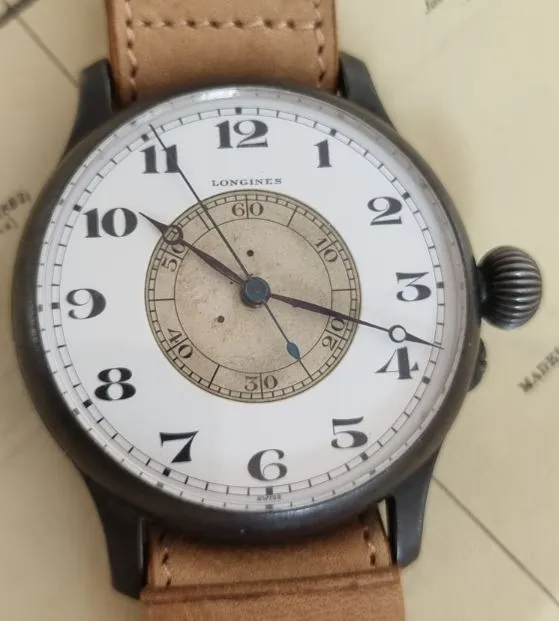
This prototype, with serial #49315XX underwent further dial and bezel modifications evolving into the famous hour-angle production watch. The Hour-angle enabled the calculation of longitude and went onto receive a patent from the World Intellectual Property Organization in October 1931, becoming history’s most famous pilot watch.
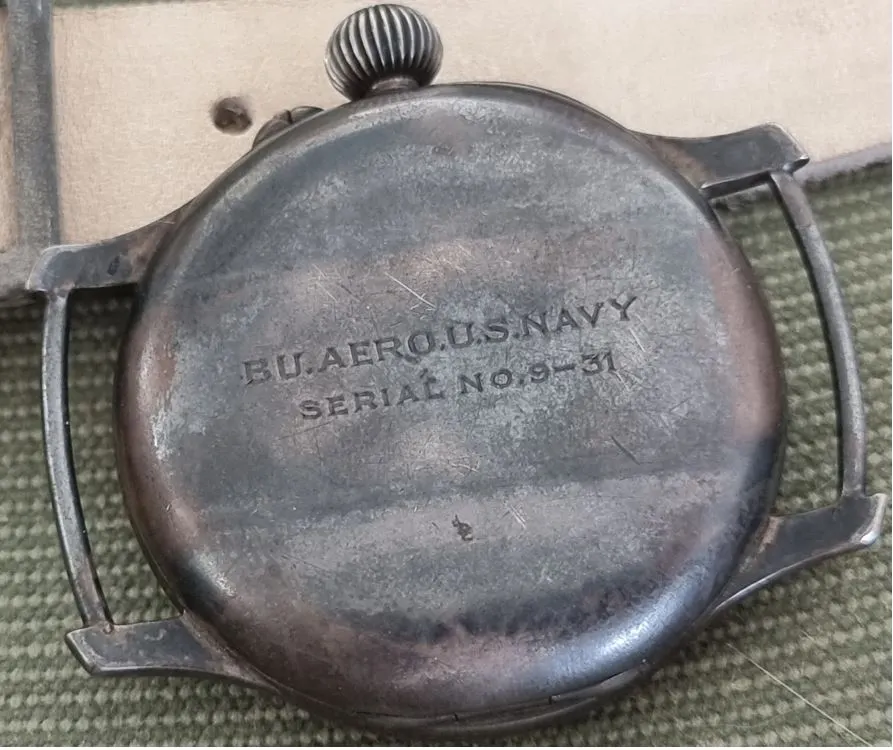
Further, a Weems with serial #4931573, just a few serial numbers apart was supplied to the Bureau of Aeronautics (Bu Aero). First formed in 1921, this was the US Navy’s support organization for naval aviation, continuing operations right through until 1958.
The back of the watch bore the division’s inscription. Similarly, an unusual hacking Weems model was delivered in this very same order.

Whilst Longines have the most incredible archive department records, we now know that some of these incredible historical creations, somehow miraculously escaped the customary full notation in Longines archives.
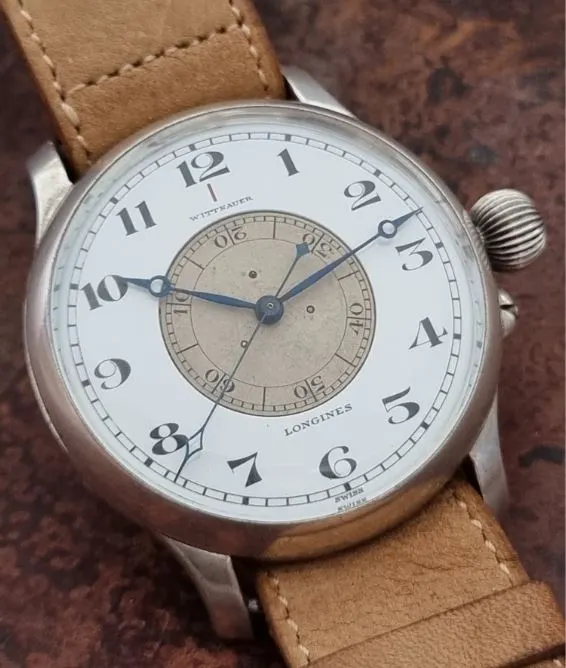
Incredibly, this includes the world’s very first Hour-angle time piece, an aircraft calotte delivered in Feb 1929, along with the first two Hour-angle prototype watches which were all delivered to Wittnauer.
This is despite them being unique and incredible prototypes, their known and documented existence, along with their delivery and use, and in the case of these three pieces, use by Lindbergh himself.
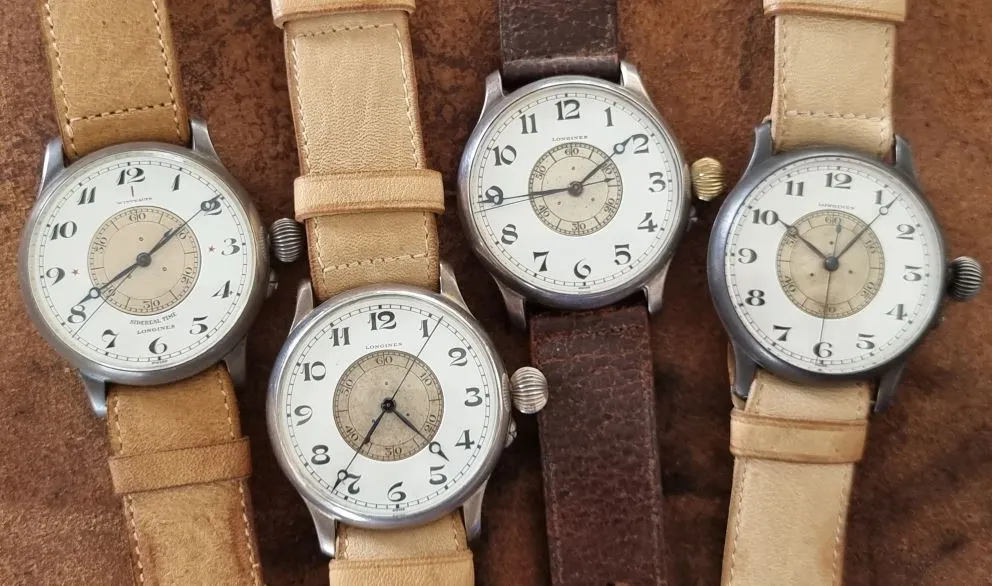
Whilst we can piece together the history of almost all of Longines incredible creations, tragically, there are no known Wittnauer records for this unique colourful shaping chapter of aviation history.
Given their importance and role in supplying instruments and time pieces to aviation’s who’s who, this is a tragic loss in piecing together an even more complete horological history from this remarkable period.
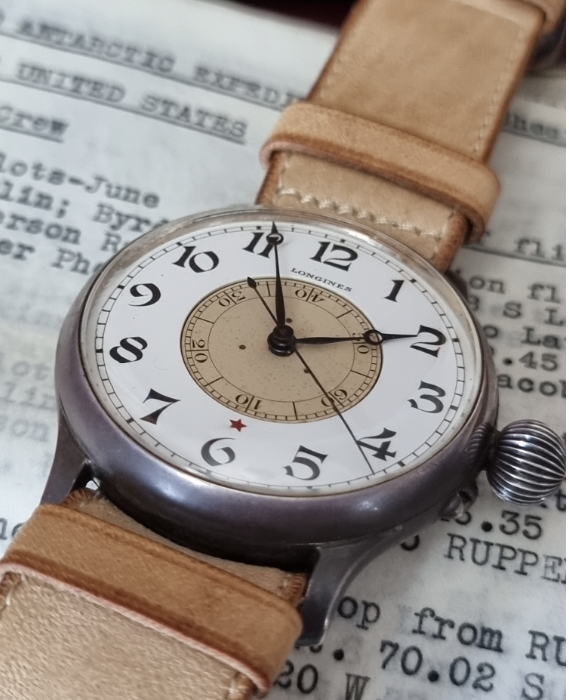
Aside from the critical role the Longines Weems played in air navigation, perhaps the 46mm watch bearing the maker’s name, has one of the most aesthetically beautiful dials ever made. Part of this can be attributed to their oversized Arabic Grand feu enamel dials.
To this, the addition of full moon Breguet type blued steel hands coupled with the contrasting inner chapter ring combine to enhance the balance, making it a unique, instantly recognizable model.
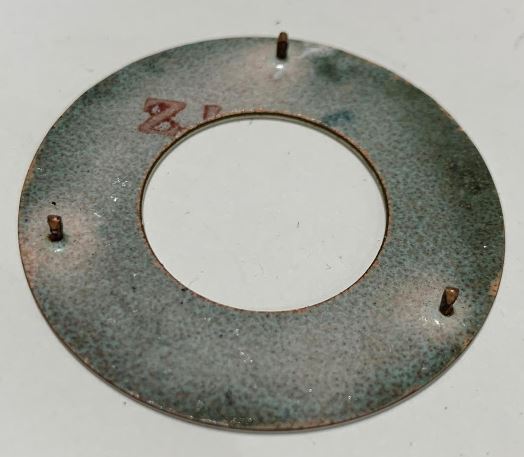
All Longines enamel dials from this incredible time were made by Flückiger et Fils AG and carry the initials ZJ, for the firm’s founder Zelim Jacot, on the rear of the dial.
He was a master dial maker established in 1860 and started supplying Longines Grand feu enamel and metal dials by 1872, settling soon after in St Imier in the Swiss Canton of Bern in 1884.
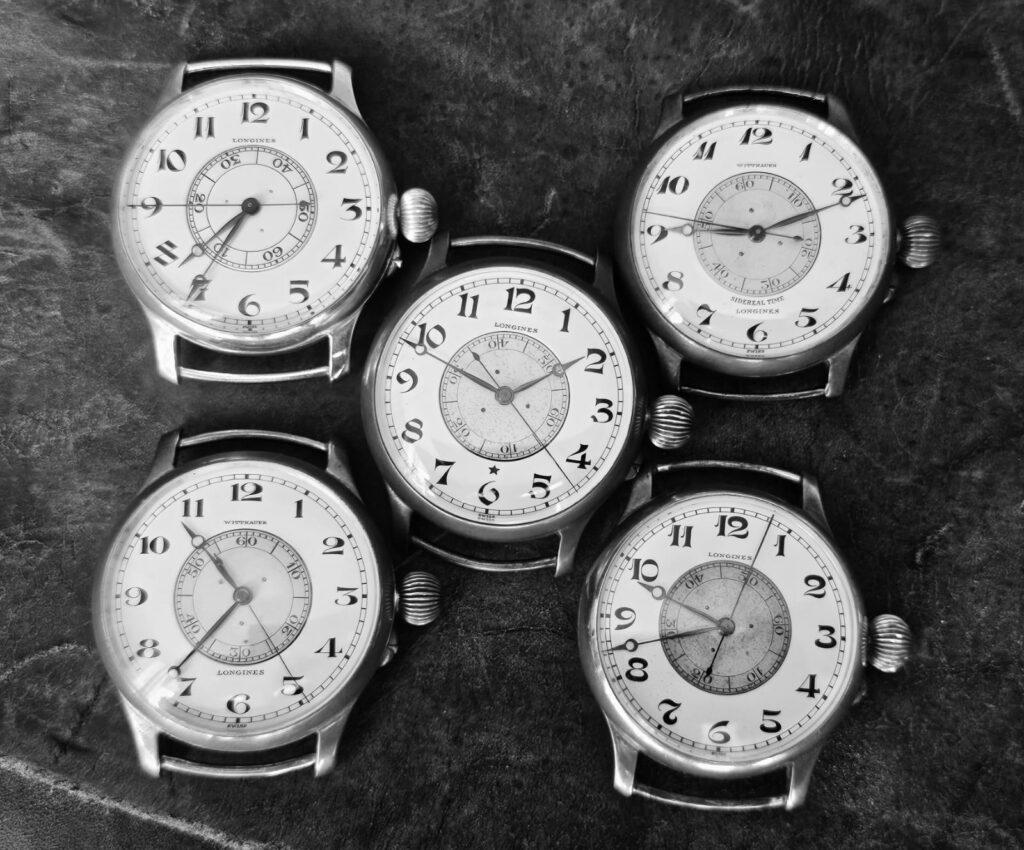
Upon Mr Jacot’s passing, the company was taken over by his brother-in-law, Fritz Flückiger, who previously was involved in operations. The firm stayed in family hands and Andre and Fernand took over in 1923, before Fernand’s passing in 1932.

The former was later assisted by his son Pierre in 1941, prior to the reins being passed to the grandson in 1974. The company was bought by the Stern Family, also with a rich dial making history, the owners of Patek Philippe, in 2004.
Today, Cadran Flückiger, a one hundred and sixty plus year old specialist dial maker continue to make the very best dials for Patek and other Swiss watch industry players and still calls St Imier, in the Swiss Canton of Bern, home.
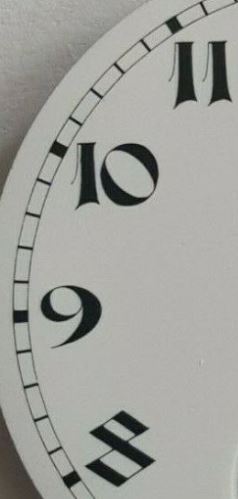
It is now known from collected timepieces that this first production order of the large Weems model included a number of sample test fonts.
To date, discoveries point to a total of five incredible fonts on Flückiger dials gracing these creations. All of these incredible type faces were supplied on this very first production order – which seems fitting given just how special this first delivery was.
Given the Weems incredible evolution from pocket watches, it is easy to see how these fonts were chosen by Longines. One of these test fonts appears to have been delivered only once as part of this 1929 order, and subsequent first production delivery in 1930.
Discoveries to date, point to just a single known survivor for this font creation. Longines museum noted they are seeing this example for the very first time since its delivery some 92 years ago to Wittnauer.
Whilst another Art Nouveau font, has just three known pieces. One of these rests in the Longines museum, and another, the very first Longines Weems watch, and that of the inventor, P.V.H Weems, with serial 3585867, now lies in the Smithsonian.
The same typeface was also also supplied to Lindbergh in this first order of 1930 for his Weems Hour-angle dial piece with the unit of arc calibrations added to the dial.
This was pictured in Weems first edition Air Navigation book (pic above) and it’s current existence and whereabouts remain unknown. Perhaps, these three pieces are a type of Weems wonder watch of sorts, given their art Nouveau font and unique history.
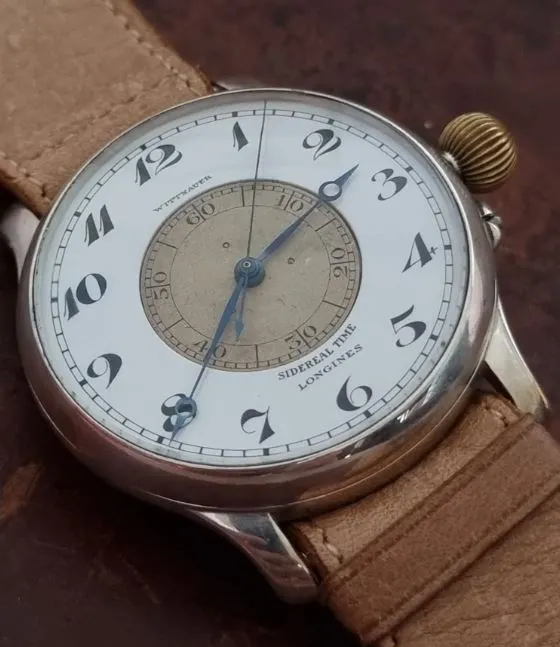
The 1929 Wittnauer order #139* contained an incredible lineup of test pieces. It included two experimental Weems type prototype hour-angle pieces for Lindbergh. One of these featured the unit of arc calibrations on the dial, mirroring the world’s first Hour-angle timepiece – his aircraft calotte, which was delivered fourteen months earlier, in February 1929.
The other had these markings on the turning external bezel making it the world’s very first wrist watch with a turning bezel. Both Hour-angle pieces simplified longitudinal calculations by converting time to arc, the 360 units marking the globe.
This same delivery also included a piece for the US Navy’s Bureau of Aeronautics with the back noting delivery, and a hacking Weems that also remains somewhat of a mystery creation.
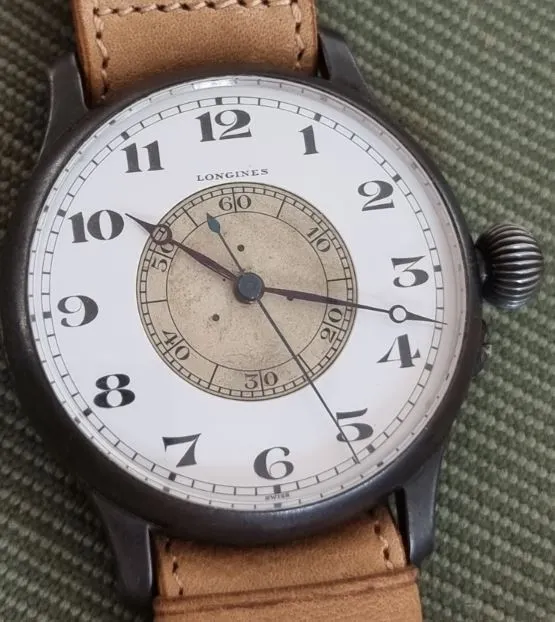
Further, it appears that the specialist Grand Feu enamel skills of the firm Flückiger et Fils, first founded by Zelim Jacot whose dials were on full display in all their glory. Most likely Longines and Wittnauer were both testing which font versions they both thought would suit the target market of the period.
To date within this first order, all five fonts of the master’s dials have now been discovered to have been delivered as a prototype or in the first test production order of April and May 1930. Delivery information points to one of these five fonts most likely being unique to this very first order by Wittnauer.
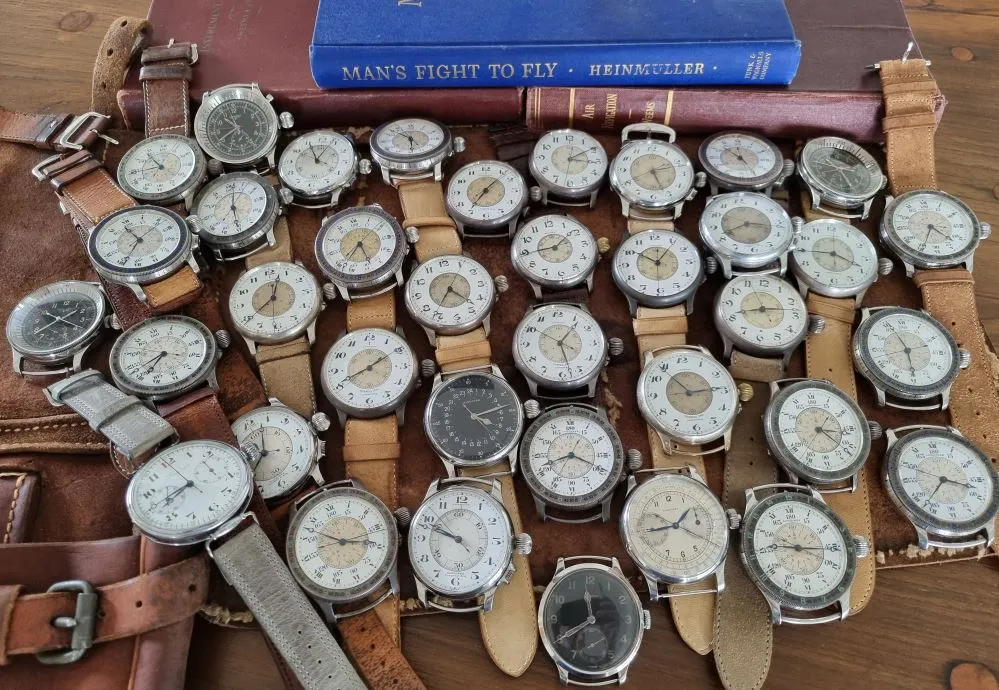
The Weems heralded from a time when the aviator or aviatrixes lives depended on their reliability, accuracy, functionality and performance. The Second-setting watch would form a critical and official part of the Weems System of Navigation.
Weems concepts, along with the repurposing of a Longines turning chapter pocket watch from 1918 originally built for the Turkish market were central to the evolution of their Second-setting watch.
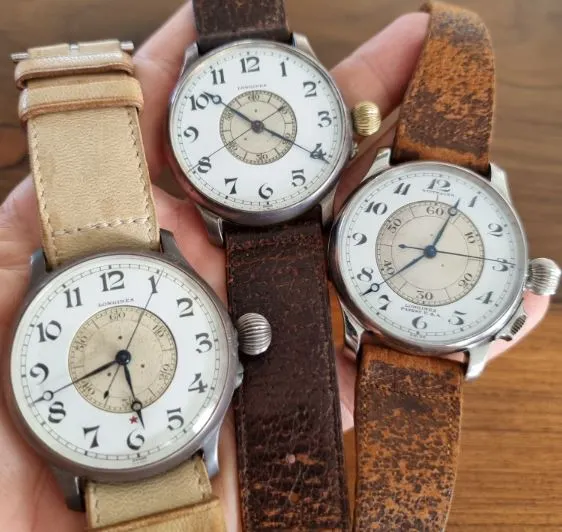
The inner chapter ring disc could be rotated in either direction to gain an additional accuracy of +/- 30 seconds by using a radio signal or other known exact timepiece. They were needed to make in-flight second-setting adjustments to better help calculate one’s position.
The Weems incredible Flückiger Grand feu enamel dials all herald from 75 plus years ago. The detailed, complex, expensive, and time consuming process makes this type of dial, along with the the variety of fonts from a bygone era serves as a unique reminder of the talents of this extra-ordinary dial maker and the Longines watches themselves. Pilots relied upon these incredible aviation tool watches with their lives.
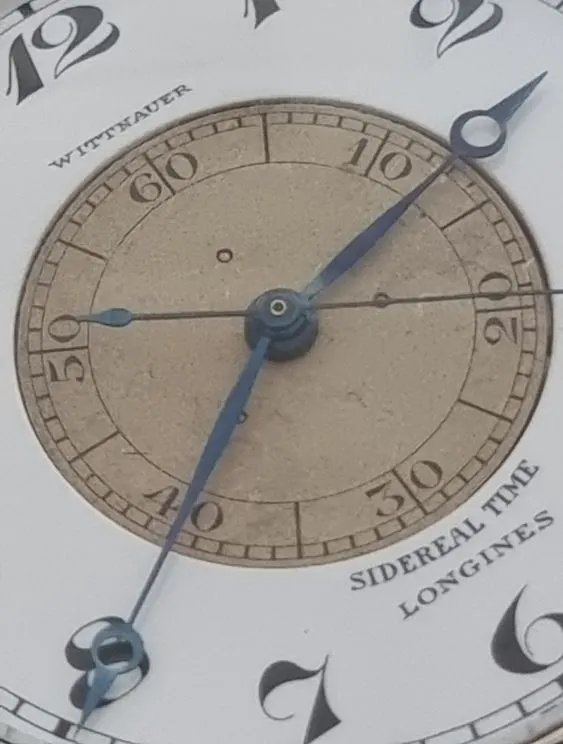
They were legible, dependable, accurate, and robust time keepers that enabled calculating one’s position in the air, and were an essential requirement overcoming the challenges of aerial navigation.
Their stories, adventures and the pilots who used them are entwined within this incredible chapter in Longines and world aviation history. A time and era that forever changed and shaped the world we know today.
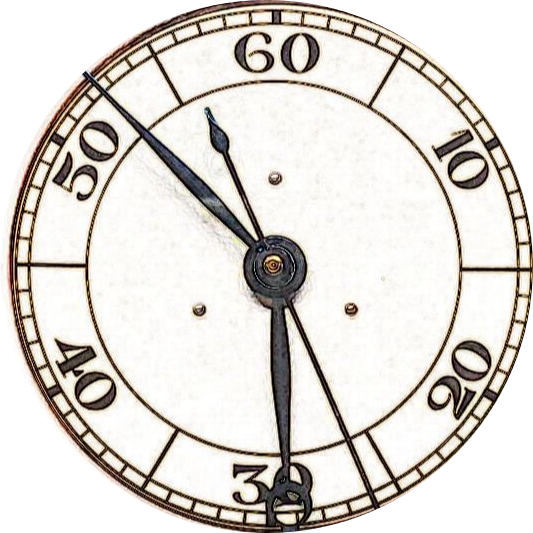






I love looking at these dial designs. It is surprising how many style considerations were made for a technical instrument. I would have thought that high readability was the important factor and any consideration of font fashion would have been secondary. All of these fonts are of course quite legible especially given the larger size of the dial and the elegant simplicity of the layout.
Very nice reading for a quite evening 🙂